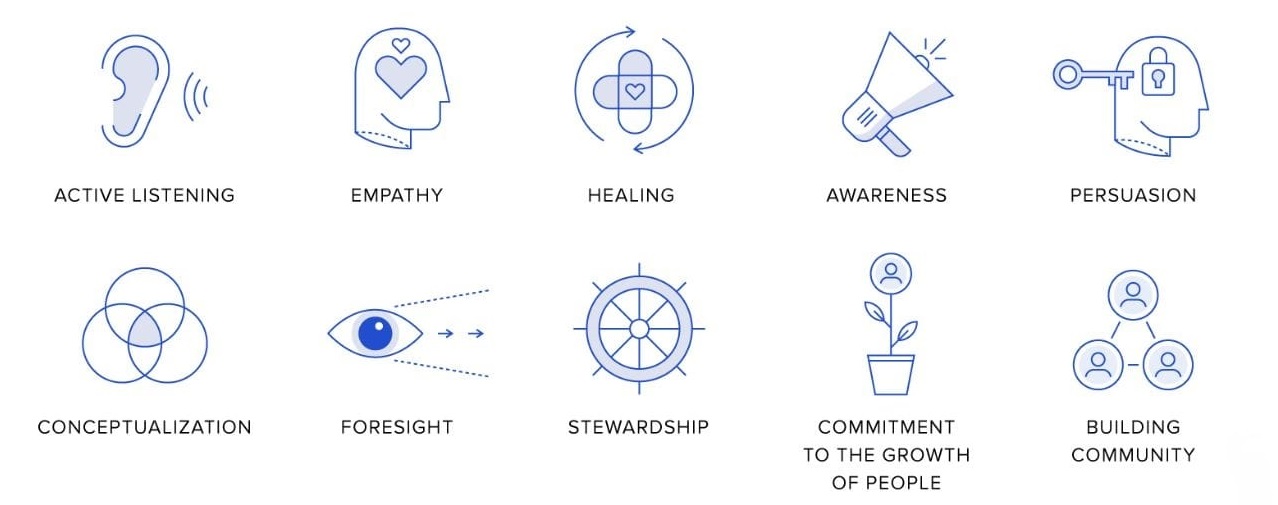

Introduction
Businesses across economies irrespective of their size want to increase their productivity. They want to grow as a business, and they also want to keep their employees happy and satisfied so that they keep growing.
But the reality is a bit different, from a recent survey conducted by Indeed Hiring Lab (a subsidiary of Indeed which works as a hiring platform for job seekers) in 2022 revealed that 72% of working Australians are not satisfied at their workplace. Why is that? What could be bothering these employees?
The same study found out that, 33% of them were unhappy about the demanding workload and 28% were facing tumultuous relationships with their peers or boss. This indicates one thing a company needs a strong leader and highly efficient managers to function smoothly and avoid dissatisfaction among its employees.
Businesses want to grow their productivity while keeping their employees happy and satisfied so that they keep growing.
But a recent survey conducted by Indeed Hiring Lab in 2022 revealed that 72% of working Australians are not satisfied at their workplace. The same study found out that, 33% of them were unhappy about the demanding workload and 28% were facing tumultuous relationships with their peers or boss. Why is that? What could be bothering these employees?
This is also a strong indication that a company needs a strong leader and highly efficient managers to function smoothly and avoid dissatisfaction among its employees.
Leadership is an innate quality and requires dedication but to know how to be invigorate the team when challenges strike can be learned. Courses such as BSB50420 – Diploma of Leadership and Management, BSB60420 – Advanced Diploma of Leadership and Management and BSB80120 – Graduate Diploma of Management (Learning) lay the right foundation with the knowledge and skills. These courses help learners be the leaders of tomorrow with their education and expertise.
In today’s blog, we will discuss how a certain type of leadership could help companies with this issue. It could exponentially increase employee retention. So, what is it? The answer is Servant Leadership.
Let us read about it now. Shall we?
What is Servant Leadership?

The leadership approach of the team before self is Servant Leadership. That means the leader in servant leadership is mindful of his actions and believes in leading people with his service. So, you might ask – who is a servant leader?
Who is a servant leader?
The leaders who feel that their team members should be happy and fulfilled both personally and professionally. So that they work better and produce better results at work.
Productivity is the essence of growth and continuity. To yield high productivity a mix of leadership and management styles come into play. The right balance will thrust the business in the right direction. Leaders with their vision and leadership skills provide such a mix and a servant leader brings a little more to the table – empathy.
They put other their team member’s needs first. This changes the dynamic of the relationship. The employees feel heard and welcomed in such a team. Team members increase 4.6 times of their productivity under Servant Leadership. Let us understand servant leadership and servant leaders with an example.
Example of a servant leader
Let’s take an example of a sales manager of a shoe manufacturing company, who gives priority to his team members in the sales department. He takes a keen interest in the well-being of each team member. He learns and leads with an example. He coaches the slow performers and listens to their problems. he mentors them with ideas and constructive feedback.
He ensures his team has the necessary knowledge and expertise to perform and provides unbiased support wherever needed. He is a true servant leader. Servant leaders believe in the growth of all rather than personal gains.
Examples of Servant Leader from Real Life
The world has seen some great servant leaders who have moved governments and changed the course of history for their people. Some of them are:
- Nelson Mandela was a South African revolutionary, activist, and politician. He stood against the apartheid rule of his nation’s oppressive government and laid down the foundation of democracy. He put his people’s well-being before him, a true servant leader.
- Martin Luther King Jr was a strong advocate of non-violence. He was a civil rights activist. He put African American needs before his hardships and led a movement for a better future for his people.

Servant leadership is all about work gratification, service, and partnership. Though the goal and culture of an organisation dictate the style of leadership they want but if there is a strong desire to work towards a better future with collaboration then servant leadership is the best leadership for that organisation.
If any organisation wishes to have a servant leader leading them then what should they be looking for in a manager – what qualities? Any rules?
Rules to Become a servant leader

According to Robert K. Greenleaf, there are 10 rules to become a servant leader. Larry C, who was a president at the Robert K. Greenleaf Centre for Servant Leadership further breaks down these 10 rules in the following manner:
- Stewardship:
- A servant leader should always lead by example.
- By leading by example, servant leader demonstrates the values, attitudes, and work ethic they expect from their team members.
- Healing:
- A servant leader recognises that team members may carry the scars of past toxic work experiences or challenging circumstances.
- Servant leader understands the importance of supporting their team members in healing from such trauma.
- He actively contributes to creating a healthy work-life balance that allows for personal growth and recovery.
- Listening:
- A servant leader pays attention to what his team members have to say.
- He lets them talk about their ideas and troubles.
- This way his team feels more heard and welcomed.
- Empathy:
- A servant leader is an empathetic leader.
- He knows to lead his team he should know each member so that they all grow together.
- Conceptualisation:
- A servant leader conceptualises plans for his team as well as the organisation. That is why they should be able to think of ideas.
- The context might change depending on the need, but a servant leader should be able to form ideas with visualisation and leadership.
- Self-awareness:
- A servant leader should be aware of himself.
- He should know about his shortcomings.
- He should be aware of his strengths as well. This will tell him how he fits with his team.
- Building community:
- A servant leader should build connections between him and the team as well as among the team members.
- Connections help the team and a servant leader to trust each other and be more high yielding.
- Persuasion:
- A servant leader should use his power of persuasion to influence his team.
- He should never use the power of his position against his team.
- Foresight:
- A servant leader should have foresight in plans as well as ideas. This would help his team to grow and be prepared for issues that might come up in the future.
- Commitment:
- A servant leader is committed to the growth of his team. He does this by allocating resources for his team members.
- He coaches his team or arranges for training for better productivity.
A manager or a leader who follows these 10 rules will surely stand out as an exceptional servant leader. But to follow rules there should be qualities that match with the route that a leader is trying to walk on. So let us see what the qualities of servant leadership are.
7 Qualities of servant leadership
- Teamwork: Servant Leadership is all about putting the team first rather than personal gains.
- Employee satisfaction: Servant Leadership follows and executes plans that improve productivity and employee satisfaction in the organisation.
- Adaptability: Servant leadership with the virtue of foresight adapts to tough situations and takes care of the well-being of the team.
- Motivation: Servant leadership motivates the team. It is never biased towards any member. Continuous motivation boosts the morale and engagement of the team.
- Transparent communication: Servant leadership believes in having clear transparent communication with the team and within the team. Clear and transparent communication builds trust and well-being within the team.
- Authenticity: Servant leadership is true to its belief and the team. It propels the team with authentic care, advice and motivation that fuels growth.
- Accountability: Servant leadership is all about taking full responsibility for the actions. It propagates purpose and ownership within the team while creating a dedication to set goals.Servant leadership empowers the team with motivation and authenticity which leads a team to success and growth. But what is the difference between a traditional leader and a servant leader?

How A Servant Leader is Different from a Traditional Leader?
Traditional leadership centres on the leader. The team supports his efforts towards success through their actions and work.
On the contrary, servant leadership puts the team’s well-being before personal gain. he engages authentically with the team and listens to what his team wants to say.
Conclusion
Getting high productivity out of a team needs a leadership style that truly speaks with the team. Unhappy employees are not concerned about organisational growth. Servant Leadership focuses on the team but never loses sight of the organisational goals. So, if you are someone who wants to excel at a leadership position in your organisation or if you are an organisation that needs a good leader, servant leadership could be your answer.
At SIT (Stanford Institute of Technology) we offer BSB50420 – Diploma of Leadership and Management, BSB60420 – Advanced Diploma of Leadership and Management and BSB80120 – Graduate Diploma of Management (Learning) in Melbourne, Australia. For more information contact us here.

